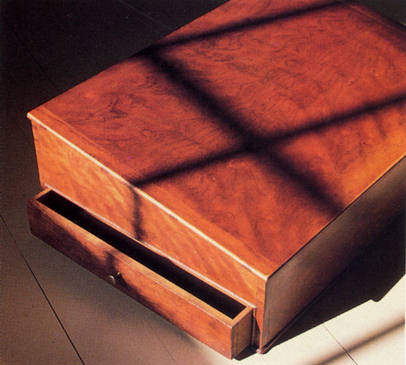 lefore
you can build anything from wood, you must prepare your materials. Plane
and joint the lumber true, making all the surfaces straight, flat, and
square to one another. This is a critical step in any project, and
although it sounds simple enough, it requires careful planning. lefore
you can build anything from wood, you must prepare your materials. Plane
and joint the lumber true, making all the surfaces straight, flat, and
square to one another. This is a critical step in any project, and
although it sounds simple enough, it requires careful planning.
Think about what you’re
doing for a moment. You must take a material that grows naturally in
rough, crooked, tapered cylinders (trunks and limbs) and transform it
into smooth, straight rectangles (boards). As you do this, the material
tends to move with every change in the weather. To accomplish this task,
you must understand the
nature of wood
and remember its
special properties.
Contents
|
|

To
keep this elegant Shaker Lap Desk as light as possible, the wood has
been planed to between 3⁄16 inch and 3⁄8 inch thick. To make it strong,
the corners are joined with through dovetails that were fitted to within
1⁄64 inch. To work such thin wood to such close tolerances, you must
properly prepare the materials beforehand.
SPECS:
61⁄8” high,
19-3⁄8” wide, 13” deep
MATERIALS:
Hard maple
CRAFTSMAN:
David T.
Smith,
Morrow, OH
|